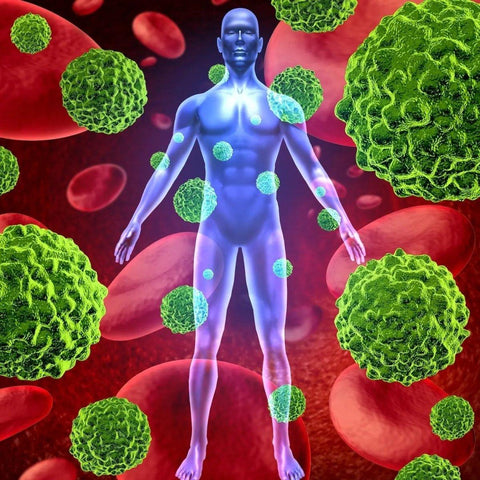How can you remove static from bean bag filling so you can clean up easily and make life easier if you suffer a spill?
Anybody who has had an accidental spillage of bean bag beans will tell you that it’s a considerable challenge to clean it all up. Those little balls of polystyrene can easily get away from us, and when we think we have got them all together, they begin to make their escape like polystyrene prisoners. Hands down, one of the biggest problems in cleaning up bean bag beans is static. As bean bag filling produces a significant amount of static electricity, this is what causes the bean bag filling to blow all over the place and stick to your clothes. Great news: there are easy and effective solutions to deal with static in bean bag filling, so you don’t have to worry about a messy cleanup. But how can you remove static from bean bag filling so you can clean it all up easily and make life so much easier if you suffer a spillage? You may also want to know how to remove beans from a bean bag.
When it comes to removing static from bean bag beans, there are several approaches you can try, but the easiest method is to use a dryer sheet or a spray bottle with a little water to neutralise the static quickly.
What is static?
Here comes the science! Static (or static cling) is when lighter objects have opposing static charges. Items like polystyrene have static cling, not because they actually have a charge in them, but these objects are good insulators. But if the electrons are free to move they could move back to the original object. Items made out of insulating materials can, therefore, have a charge, such as these pesky polystyrene balls.
Note: When handling bean bag filling, take precautions to minimise static, such as using dryer sheets or grounding yourself, to prevent the beads from sticking to surfaces or creating a mess.
But once you get an understanding of how static electricity is, and what an insulator is, you can use the appropriate steps to either reduce the initial static electricity in the space, control how it transfers to the material, or use the right tactics to remove the static from the bean bag filling.
Causes of static cling in bean bag filling
Static cling in bean bag filling is a common frustration, and it all comes down to the way polystyrene balls, also known as bean bag beans, interact with their environment. When you pour or move the bag of filling, the beans rub against each other and other surfaces, like your clothing or furniture, causing electrons to transfer and creating an imbalance of electrical charges. This static charge makes the beans stick to everything—your hands, your clothes, and even the walls of the room. Dry air, especially during colder months or in rooms with air conditioning running, can exacerbate static cling. The lack of moisture in the air allows static to build up quickly, and even the slightest breeze from open doors or a draft can cause the beans to scatter across the room. This is why cleaning up spilled bean bag filling can feel like chasing after confetti in a windstorm—static and air movement work together to make the beans difficult to collect.
How can you remove static from bean bag filling?
There are numerous tactics that everybody can take advantage of. This article shares tested tips for removing static from bean bag filling, ensuring you use methods that have been proven to work. When a polystyrene ball has this charge, it means that it is easily attracted to other polystyrene balls, which is why it’s not worth trying to brush them together. In fact, using a dustpan and brush to clear up the bean bag filling can end up causing more mess. It ends up pushing the beans in so many different directions that you will spend a lot longer clearing everything up. But there are many approaches that you can use. The points mentioned, such as static prevention techniques like dryer sheets and anti-static sprays, are effective ways to reduce static and make cleaning easier.
Increase the humidity of your home.
Increasing the humidity in the home works to add moisture to the air. While this moisture makes your air more conductive, this may sound counterproductive, but because the air becomes more conductive, this decreases the static charge. If you know there is a problem with one specific room and it's too dry, you can increase the humidity using various tactics, depending on the room and the space's size.
Use a large room humidifier
The most effective way to increase the humidity in your home is to use a humidifier. If you decide to go down this route, ensure it is powerful enough to cover the area in question. Many people purchase smaller models that are unable to humidify larger rooms.
Add houseplants to your room.
Using a process called transpiration, plants help add humidity to your home by absorbing water through their roots and circulating the moisture up to the leaves. As a result, moisture goes into the air. Just as long as you water the plants frequently, you will release moisture.
Leave the bathroom door open when showering
A low-tech solution, if you cannot afford house plants or humidifiers, is to run a hot shower and steam up the place. The moisture from the evaporating water will gradually spread throughout the home. You can also leave the water in the bathtub to cool.
Place dishes of water near heat sources.
If you have heating sources like HVAC registers, putting a bowl of water near to them will cause the water to heat up and evaporate.
Set vases of water on sunny windowsills
For those who don't have HVAC registers but have large windowsills, you can place a glass of water on them, especially on a sunny day. The water will gradually heat up and evaporate. However, this can take significantly longer to humidify the space.
Boil water and cook on the stove
If you have been trying to gather the bean bag filling from the kitchen, you could kill two birds with one stone using this method. Increasing moisture in the kitchen is pretty straightforward if you cook on the stove.
Removing the ionic charge from the air
The electrical component in the air can help to reduce the static. As there are negative ions in the air, using approaches to remove this charge from the air will remove the static.
Ionic air purifiers
Purchasing air purifiers is now easy enough. Air ionisers are in air purifiers, which remove particles from the air. A standard air purifier can do the job. A fan greatly improves ioniser performance, but you must give it time to purify the entire space. If you are trying to remove the ionic charge from a large space, such as a living room, you may need to leave it on for quite some time before you start searching for stray bean bag filling.
Ionic hairdryers
Ionic hair dryers are very similar to traditional hair dryers, but they remove any static charge that may be present in your hair. Simply point the hairdryer at the bean bag fillin,g and it will remove the static. Of course, using a hairdryer to blow the bean bag filling everywhere can be counterproductive. If you are struggling to get them all together, it's worth doing this in batches or having a method ready to catch them, such as a piece of cardboard.
Ionic pet brush
As with the hairdryer, you can use an ionic pet brush in the same way. It can be very useful if you've got one lying around.
How to remove static from bean bag filling with an anti-static spray
One of the quickest ways to eliminate static is to use an anti-static spray, which can be purchased from any shop. This will significantly reduce the amount of static electricity, especially in problem areas like carpets. You can also make your own static spray at home. Mix one capful of fabric softener in a spray bottle of water, shake the mixture, and lightly spray it over the carpet. Note: Be sure to spray the item evenly, holding the pump 30 cm away from you, as those with allergies may be affected by the chemicals. Wait for the spray to completely dry out the bean bag filling before collecting it with a dustpan and brush.
When collecting the beans, use a pan (dustpan) and a brush. It is more effective to use a larger broom rather than smaller brooms to sweep the beans onto the pan, as bigger brooms help control static and direct the beans with less disturbance. Be sure to use very slow and sweeping movements, and with the window shut, as the slightest breeze can cause the beans to go everywhere.
Using metal to reduce the electrical charge
Metal is a very useful material to reduce the electrical charge. It’s something that many people do to reduce the charge on their clothing. By running a metal hanger over the stray bean bag filling, this transfers the electron charges to the metal hanger and will give you enough time to brush up the remaining bits. When accessing the bean bag filling, always ensure the zipper and all zippers are securely closed after use to maintain safety and prevent spillage. If you have used a paper clip to open the childproof safety zip or zipper, remember to remove the paper clip immediately to comply with safety standards and keep the bean bag safe for children. Safety features, such as childproof zippers, are essential for meeting Australian safety standards and preventing accidents. It’s a good idea to keep some piece of metal on your person when cleaning up, such as a coin, a thimble, or a keychain, in case you find a single bean on your clothing.
How to remove static from bean bag filling with bi-carb soda
This cupboard staple has so many uses around the home. It neutralises odours and, while used in cleaning and baking, and even works wonders as a digestive aid, it also works as a handy static neutraliser. A small sprinkling over the bean bag filling immediately removes the static so you can use a dustpan and brush or a vacuum cleaner on them. However, if your vacuum has a small bag, keep in mind it may fill up quickly when collecting beans, which can be inconvenient for larger or messier cleanups. The great thing about this diverse powder is that it is incredibly cheap. You can purchase a massive amount in your local supermarket for next to nothing.
How to remove static from bean bag filling with dryer sheets
One of the oldest methods of getting rid of static from clothes is to use dryer sheets, but it also works on picking up stray bean bag filling. A dryer sheet is an ‘external antistatic agent.’ While the chemical makes the surface of the object slightly conductive, it gets rid of static cling. If you are using a vacuum to collect the bean bag filling you can rub a dryer sheet over the vacuum so you can vacuum up the beans quickly.
You can also create your own DIY lint roller or dryer ball for static removal. Wrap tape around your hand (sticky side out) to make a quick lint roller, then roll it over the beans to pick them up. Alternatively, you can create wool dryer balls at home or purchase some from your local shop.
However, it is essential to note that individuals with sensitive skin or asthma may experience a reaction to the chemicals in the scents. If you are looking for a scent-free/chemical-free alternative, consider making your own dryer sheets using vinegar, cloth, and essential oils. It’s also feasible to use aluminium foil from the kitchen drawer by rubbing it on the beans. Although they can be a bit challenging to make at home, dryer balls are a safe and eco-friendly alternative to scented or mainstream dryer sheets.
How to remove static from bean bag filling with vinegar
Another simple method is this cupboard staple. Whether you are out of dryer sheets or don't have anything in the kitchen, you can use vinegar on a washcloth. Dampen a washcloth with vinegar and apply it to the bean bag filling. And yes, you may think that this makes everything smell like vinegar, which is why it's not a hugely popular option. However, you can mix this with some water in a small spray bottle. You could also use apple cider vinegar if you have some on hand or are feeling particularly frugal. Apple cider vinegar has no strong scent, and if you have some stray beans, simply applying a light coating of apple cider vinegar will do the trick.
How to remove static from bean bag filling with water
If you don't have any of the above options, you can very easily apply water to these beans. Put a small amount of water into a little spray bottle and lightly apply it to the beans. Ensure that you don't submerge the beans in water. If you add too much water, this could cause the beans to run away from you. A tiny bit of water sprayed evenly over the beans will do the job.
Cleaning up bean bag beans is not one of those fun tasks. One of the significant problems with cleaning up anything like this is that it is so small. And as soon as you throw into the mix any additional air current, whether it's from an open window or you accidentally cause a draught, this is a very frustrating task to complete. Ensure that, after removing the static, you refrain from using the normal forward and back vacuuming motion. This will cause a current that will blow the beans further away! When applying the anti-static agent to the offending beans, ensure you dab at them from above. While this will slow you down, it will help you to clean up a greater amount.
Preventing static in bean bag filling
The best way to deal with static in bean bag filling is to prevent it from building up in the first place. Start by reducing air movement in the room—turn off fans and air conditioners before opening your bean bag or starting to fill it. This helps keep the beans from blowing around and picking up extra static. When it’s time to clean up, use a vacuum cleaner with a gentle suction setting to avoid spreading the beans further. Spraying a light mist of anti-static spray or rubbing dryer sheets over the beans can also help reduce static cling, making it easier to gather them up. Handle the beans gently and avoid pouring them too quickly, as this can generate more static electricity. By taking these simple steps, you can keep your bean bag filling under control and make cleanup a breeze.
Tips for minimising static buildup
If you want to minimise static buildup while handling bean bag filling, a few clever tricks can make all the difference. Try using a lint roller or even a balloon to collect stray beans—these methods attract the beans without creating more static. For larger spills, a large piece of cardboard or a dustpan with a soft brush can help you gather the beans without them sticking everywhere. When filling or refilling your bean bag, choose a room with minimal air movement and use a funnel to direct the beans into the bag, reducing the chance of static and accidental spills. Regularly vacuuming the floor and skirting boards helps remove dust and dirt that can contribute to static buildup. By keeping the room clean and calm, you’ll find it much easier to collect every last bean.
Choosing the right materials
Selecting the right materials for cleaning up bean bag filling can make the process much smoother. A vacuum cleaner with a gentle suction setting and a soft brush attachment is perfect for picking up beans without generating extra static. For smaller spills, a lint roller or sticky tape—such as duct tape or painter's tape—can help you grab those stubborn beans that cling to surfaces. Using a bucket or a large container to collect the beans as you clean up can prevent accidental spilling and keep all the beans in one place. When handling bean bag filling, wear clothing made from natural fibres such as cotton, as these materials are less likely to generate static compared to synthetic fabrics. With the right tools and a little preparation, you can collect every bean and keep your space free from static.
Summary
If you get frustrated with cleaning up bean bag fillings, getting rid of the static can make all the difference. When emptying or filling bean bags, it's essential to avoid overfilling so that the bean bag is properly filled for both comfort and durability. When you need to pull the zipper or fabric to open or close the bean bag for cleaning or refilling, do so carefully to prevent spills. If beans do spill, grabbing them with a dustpan and broom or using painter's tape is effective—painter's tape can be safely used on wooden floors without causing damage. You could either remove the humidity from the room or, if it’s a small task and you’ve been struggling to get those last few beans together, spraying the beans with anti-static applications can give you the opportunity to sweep everything up. But it’s also important to remember that you can use static to your advantage. You can easily rub a balloon on the offending bean bag filling and collect them in this way. But if you get annoyed with bean bag filling clinging to your clothing, removing the static is what you need. Always follow safety guidelines when handling bean bags, especially when emptying or refilling them to prevent injury.





